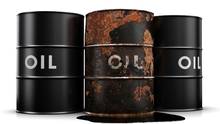The path to a smaller carbon footprint
 Imperial Oil Ltd. has achieved a key milestone at its new Kearl oil sands mine in the bitter battle that its vocal critics are waging against the Canadian industry over greenhouse gas emissions.
Imperial Oil Ltd. has achieved a key milestone at its new Kearl oil sands mine in the bitter battle that its vocal critics are waging against the Canadian industry over greenhouse gas emissions.By investing in new technologies that reduce the amount of energy used to extract bitumen, Imperial says the Kearl production will emit the same level of greenhouse gases (GHGs) as the average barrel of oil used in North America – and far better than heavy grades from Saudi Arabia and Venezuela, which are competing sources in the U.S. market.
The technological advances will not only lower operating costs at the plant to be commissioned later this year, but will give Imperial, a subsidiary of Exxon Mobil Corp., a key advantage as it looks to gain public acceptance for its expansion plans and blunt the environmental lobby that wants to halt oil sands expansion.
The oil industry worries that the environmental lobby is increasingly powerful, given the success in delaying the Keystone XL pipeline, support in Europe for a fuel standard that would penalize the oil sands, and the mounting opposition to the Northern Gateway pipeline.
“Certainly it is Imperial’s belief that to gain and maintain a social licence to operate and to grow, the oil sands industry needs to present a compelling case in how it’s addressing environmental challenges of oil sands development,” company spokesman Pius Rolheiser said Thursday. Another critical part of that challenge is the sector’s growing carbon-dioxide emissions, which will make it increasingly difficult for Canada to meet its international climate change commitments.
Company executives and the Conservative government are aiming to benchmark oil sands emissions against some comparable grades of crude that trade internationally but have not been subject to the political attacks waged against the Alberta-based industry. Environment Minister Peter Kent said this week that the industry has “an aspirational goal” to reduce oil sands emissions to be comparable to conventional crude.
But the industry has a huge challenge in meeting that aspiration, despite optimistic comments from some leading executives. The greatest production growth in the oil sands is occurring in what’s known as steam-assisted gravity drainage (SAGD), which tend to have far higher emissions than the mining operations.
Despite Imperial’s success, it’s unlikely Ottawa would seek to impose such an ambitious target on the broader industry, whose emissions vary greatly depending on the type of technology used to extract and refine the bitumen. In discussions about future regulations, the federal government has assured the industry it will do nothing to undermine its competitiveness or slow its growth.
David Collyer, president of the Canadian Association of Petroleum Producers, said the industry should be aiming at a more realistic target: foreign sources of heavy crude from Saudi Arabia or Venezuela or even California that are already as comparable to oil sands production in emissions intensity.
“Our objective over the longer term should be, in the GHG context, to drive the product that we produce to as good or better than the competing alternative, and the reality is that may be conventional oil but it may be an imported heavier oil from the Middle East,” Mr. Collyer said.
Several studies have suggested that the gap between oil sands and conventional crude is not as great as critics suggest, somewhere between 5 and 15 per cent depending on the type of oil sands production. Those studies calculate the difference on a “well-to-wheels” basis, and nearly 80 per cent of those emissions occur during driving, a point at which the industry has no control.
“Companies are “very close already, so it won’t take much here to get right on the mark,” said Steve Laut, president of Canadian Natural Resources Ltd., pointing to the single-digit percentage difference for companies that operate oil sands mines. Mr. Laut said technology is developing quickly and there are “lots of opportunities” to cut costs and lower emissions.
But when production alone is considered, oil sands emissions are at least twice as great as those for conventional crude, and in some cases, nearly three times as more.
The industry needs a far greater push from governments – either federal or provincial – to ramp up their emission reductions and approach conventional levels, said Mark Huot, policy analyst with the Pembina Institute, a Calgary-based environmental lobby group. Alberta now requires large oil sands producers to reduce emissions by 12 per cent over time, which is not nearly enough to achieve levels similar to conventional producers.
You can return to the main Market News page, or press the Back button on your browser.

